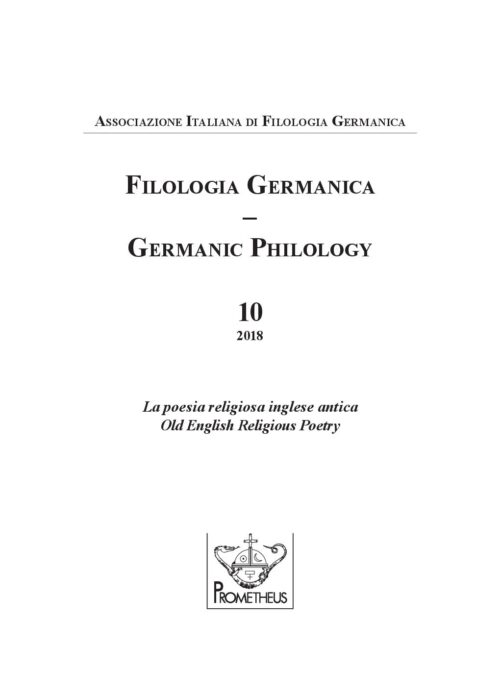“Felices oculi qui cernunt gaudia coeli”. La sezione finale anglo-latina di The Phoenix
DOI:
https://doi.org/10.14672/fg.v10i.2566Abstract
The Phoenix ends with a section of eleven lines characterised by the use of a mixed poetic language (a-verses are in vernacular, b verses are in Latin). The aim of this paper is to discuss the method of composition and the criteria followed by the poet in his choice of the Latin phrases to be coupled with the OE ones. Starting from an interesting parallel between milde ond bliðe in Elene 1317a and blandem et mitem in Phoenix 674b, a detailed analysis of each Latin b-verse will show how the poet selected phrases which could fit in the line also with regard to the traditional technique of collocating words. To prove this assumption, the b-verses will be back-translated into OE, and the resulting lines will be compared with other attested passages in the corpus, to test their combinative appropriateness. The second step will be to look for the possible Latin sources of the Latin metrical fragments, even though their content is too generic to allow any direct borrowing hypotheses.
However, the rich harvest of parallel phrases will enable us to prove that the poet exploited a familiar Latin vocabulary drawn from his religious readings and liturgical practice (especially hymns and prayers). We can therefore safely state that he must have been a monk poet whose ability to compose in the traditional style manifests itself also in the use of poignant iuncturae, equally well suited to the hexameter-ending and the Germanic half-line: in composing the final section on such a relevant monastic subject as the laus perennis of God, he wished to weave a double-faced fabric which could be appreciated on both (linguistic) sides.
Pubblicato
Fascicolo
Sezione
Licenza

Questo lavoro è fornito con la licenza Creative Commons Attribuzione - Condividi allo stesso modo 4.0.
CC-BY-SA



